|
Edmontosaurus means "Edmonton Lizard" named for the
Edmonton Rock Formation in Edmonton, Alberta, Canada and lived in the
cretaceous period, about 73 to 65 million years ago. Fossils have been
found in western North America, including Montana, USA, and Alberta,
Canada. Edmontosaurus was a plant eater and was 42 feet long, 10 feet
tall at the hips and weighed 3 to 3.5 tons. Edmontosaurus was a slow
moving dinosaur with few defenses, but may have had keen senses
(eyesight, hearing, and smell) to help it avoid predators in its swampy
habitat.
|
|
 |
| |
|
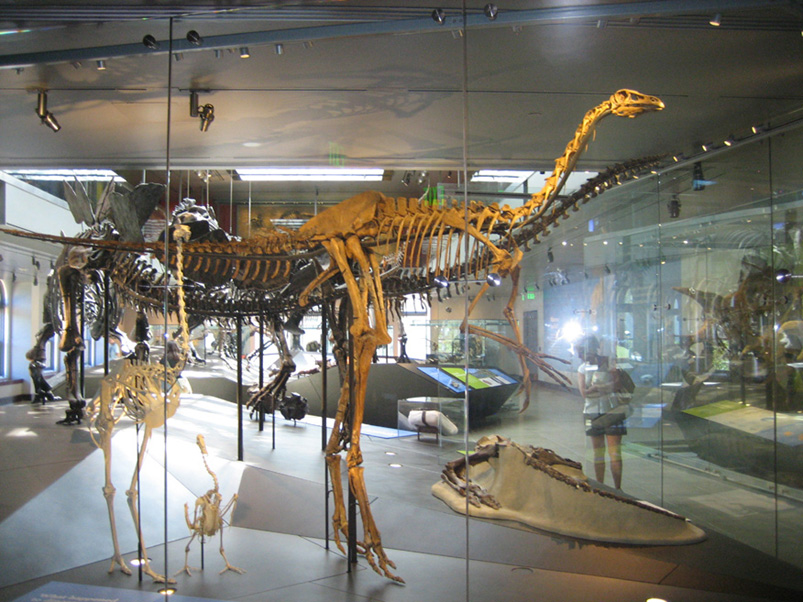 |
|
This Rotunda is between some of the exhibits and was dedicated when the Natural History
Museum opened its doors in 1913, and is one of the Museum's most elegant
spaces. Lined with beautiful Italian marble columns, mosaic tiles on the
floor and crowned by a glorious stained
glass dome and coffered ceiling, the room is also the home of the very
first piece of public art funded by Los Angeles County, a Beaux-Arts
statue entitled "Three Muses," which represents the disciplines of Art,
History and Science.
|
|
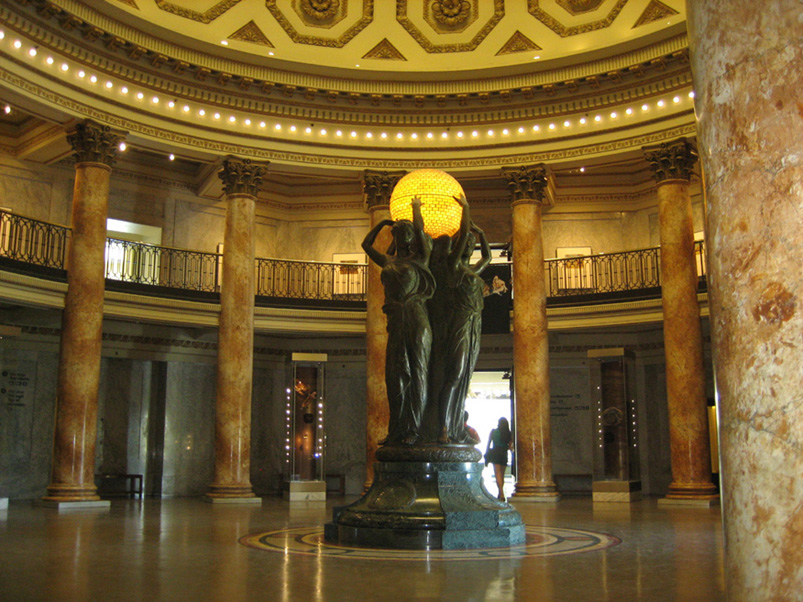 |
|
The Rotunda’s dome is 58 feet in height, with a skylight
20 feet across and the room is 75 feet in diameter. The Rotunda also has
three wings and is the perfect space for wedding ceremonies or any kind of
private or corporate reception.
|
|
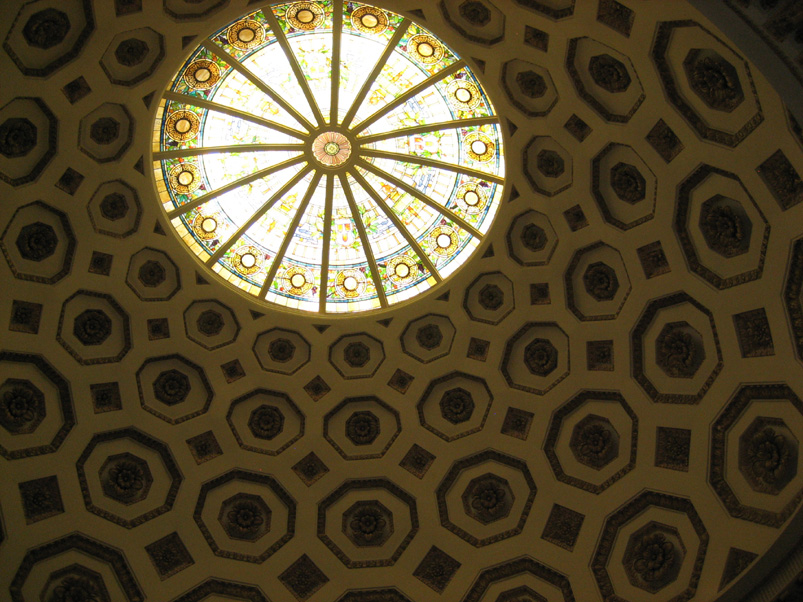 |
With glass doors that look out over Exposition Park, it is the ideal
space to be used in conjunction with the Exposition Rose Garden which is
huge.
|
|
 |
|
Here you see a cheetah in full stride along with a
skeleton poised in the same position. It's amazing how small the bones
are after seeing it up close which would explain why this animal is
capable of running up to 70 mph and are the fastest land animal. In the
wild their most important prey are medium sized hoofed animals such as
gazelles, impalas and waterbucks.
|
|
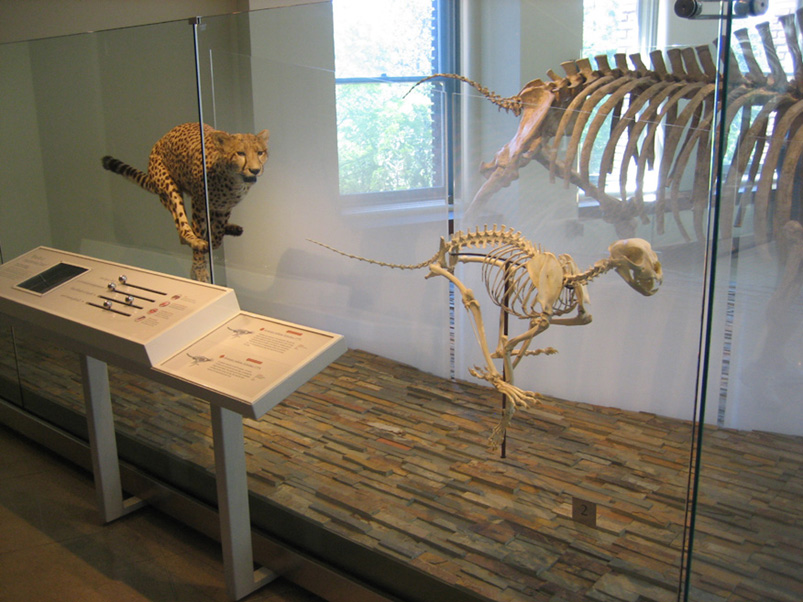 |
|
This is a Mastodon which roamed North American. The name
Mastodon means 'nipple tooth' which refers to the shape of it's molar
teeth. Mastodons and Mammoths are often confused which is understandable
since both were giant, prehistoric elephants. Mastodons, like Mammoths
were covered with fur which had thick coats of shaggy hair to protect
them from the intense cold. Mastodons were primarily browsers, nibbling
on shrubs and the low lying branches of trees. Mastodons weighed over
five tons, were famous for their long curved dangerous tusks and went
extinct during the last Ice Age.
|
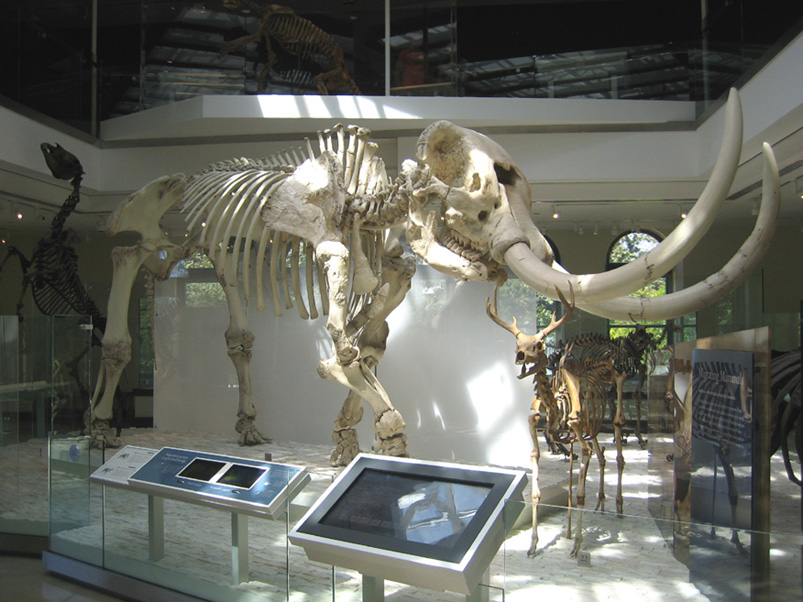
|
Below the huge Mastodon tusks is a modern day elk which should give you
an idea how large a they really are.
|
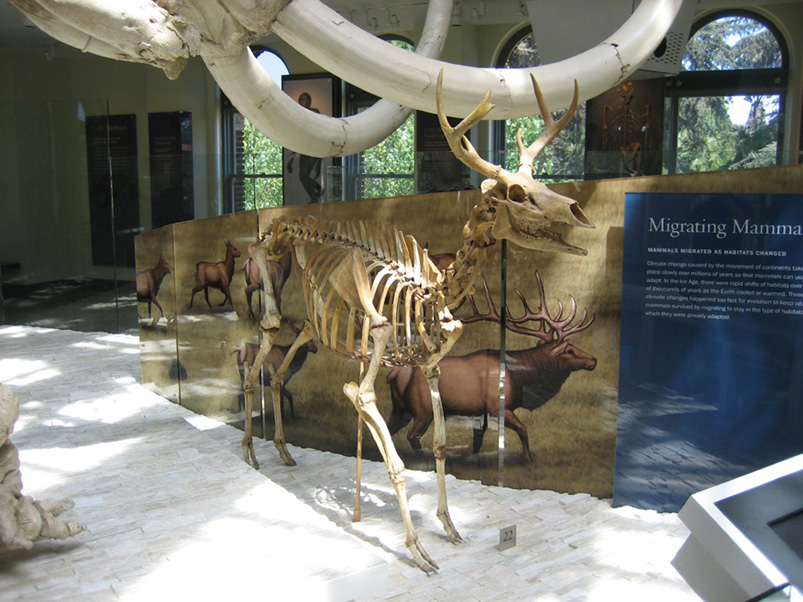
|
Stegosaurs from the upper level.
|
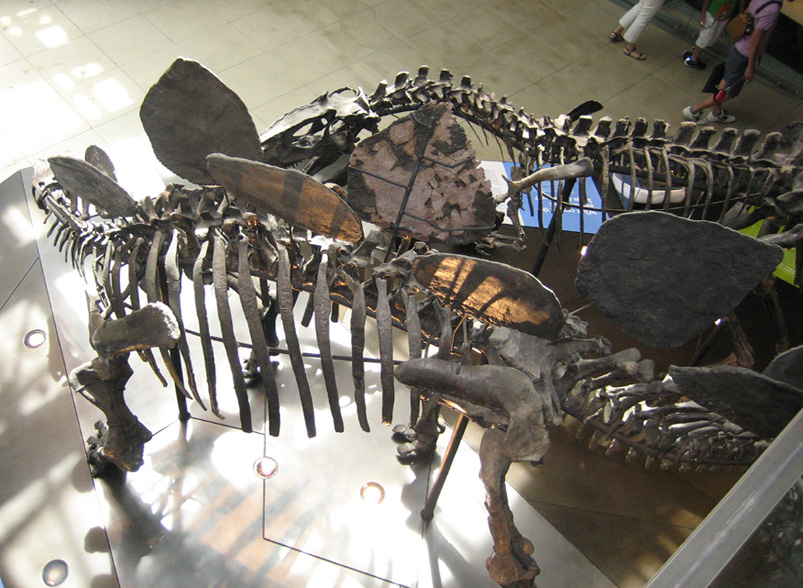
|
|
The head gear on these horned dinosaurs are enormous (I
shot this at eye level). Horned dinosaurs in particular seemed to have
evolved every possible combination of their wild looking skulls and
frills (boney collars) and each species had its own head gear. It would
be a bad day if you were on the wrong side of one of these guys.
|
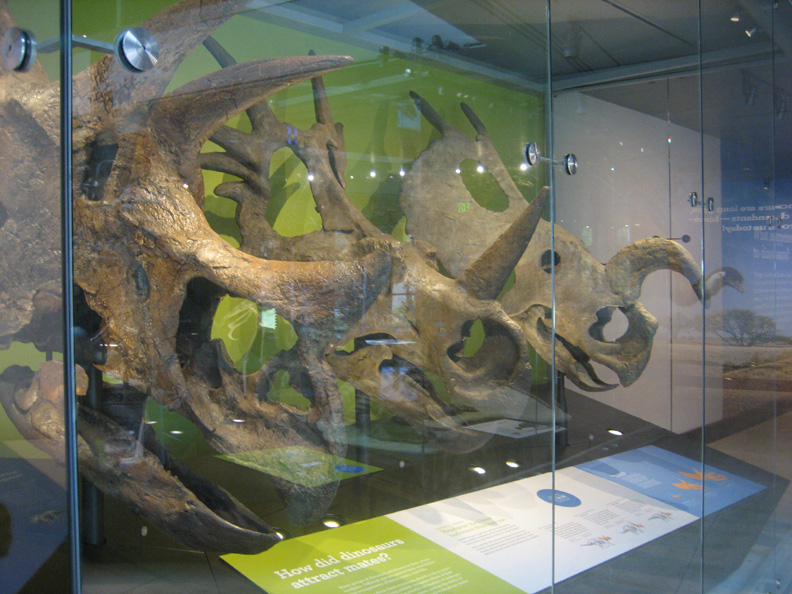 |
|
1
2
3
4
5
6
7
8
9
10
11
12 |